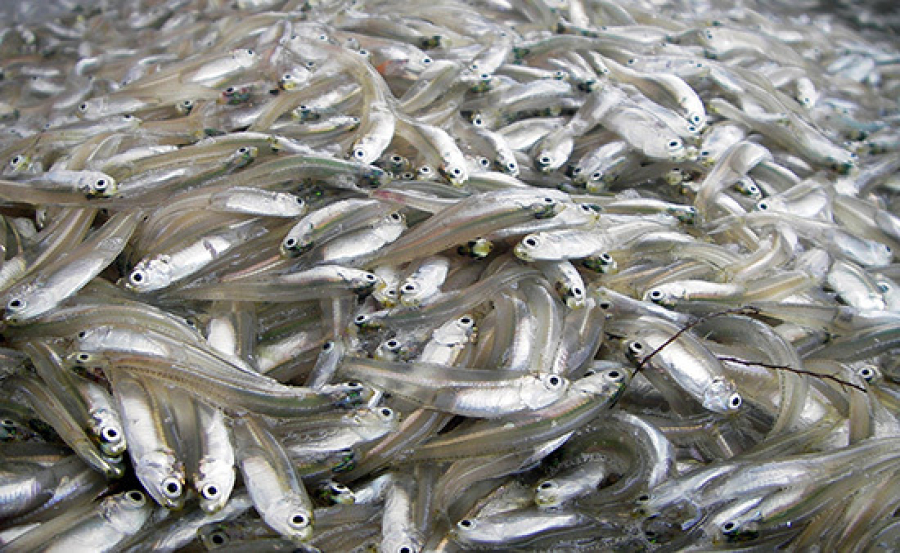Food for fish: Improving the forage base in the Chesapeake Bay
Expert report proposes recommendations for management of aquatic forage groups

Commercial and recreational fisheries in the Chesapeake Bay are an important part of the region’s culture, economy and ecosystem. But as key species in the estuary’s food web, fish like striped bass and bluefish rely on “forage”—the smaller fish, shellfish and invertebrates that underwater predators feed on. According to a recent report from the Bay Program’s Scientific and Technical Advisory Committee (STAC), a better understanding of this aquatic forage base could help support a healthy and balanced Chesapeake Bay.
Despite their importance in the Bay ecosystem, uncertainty remains as to the species that make up the forage base and how they interact with their environment. In the report, managers and scientific experts from across the region discuss the current level of knowledge and what additional information would help experts better manage forage species.
Key forage species listed in the report include the bay anchovy, mantis shrimp and several types of small, underwater invertebrates such as amphipods and isopods. Some of these species, like Atlantic menhaden, are managed by the Atlantic States Marine Fisheries Commission (ASMFC) or by states in the Bay region. But, the report states, most of the forage base is not currently being managed. With a better understanding of key forage species, the habitats those species rely on and the interactions between predators and the forage base, experts can build plans that support management of predator species and the Bay ecosystem as a whole.
Under the Chesapeake Bay Watershed Agreement, Bay Program partners are committed to improving their understanding of the role forage fish play in the Bay ecosystem, as well as supporting efforts to restore and protect critical fish habitat. Information included in the report is aimed at helping partners meet those goals.
The report, Assessing the Chesapeake Bay Forage Base: Existing Data and Research Priorities, is available on the STAC website.

Comments
I believe that this is true and this information provided help me to learn more about this fish. Using this information, I was also able to finish my assignment on this amazing Chesapeake Bay creature.
Thank you!
Your comment has been received. Before it can be published, the comment will be reviewed by our team to ensure it adheres with our rules of engagement.
Back to recent stories